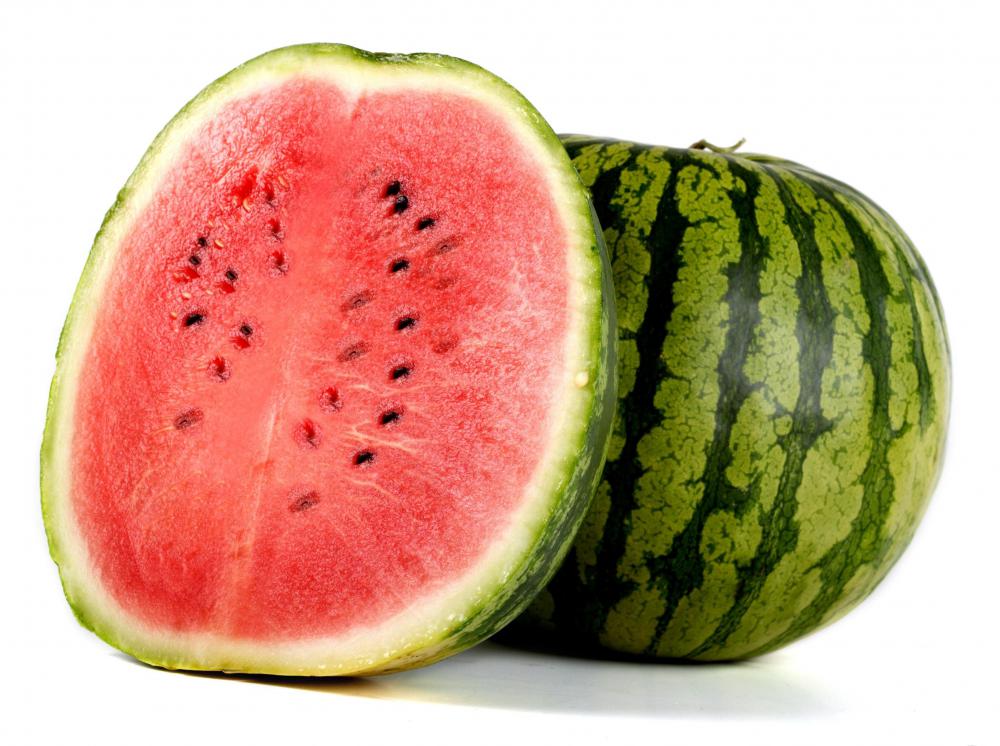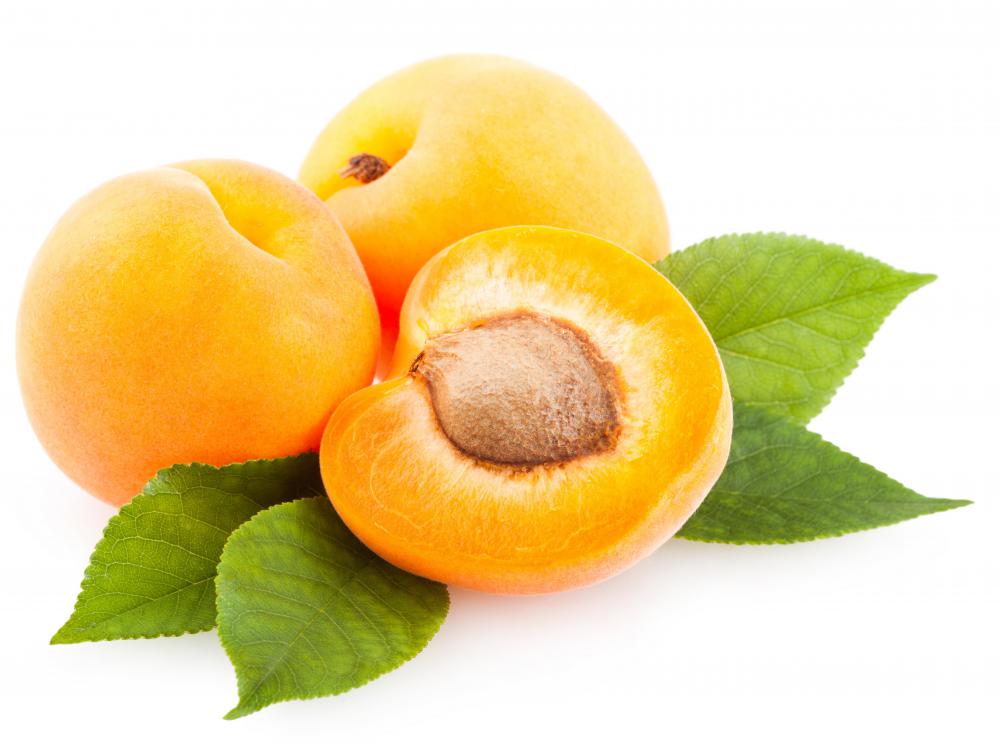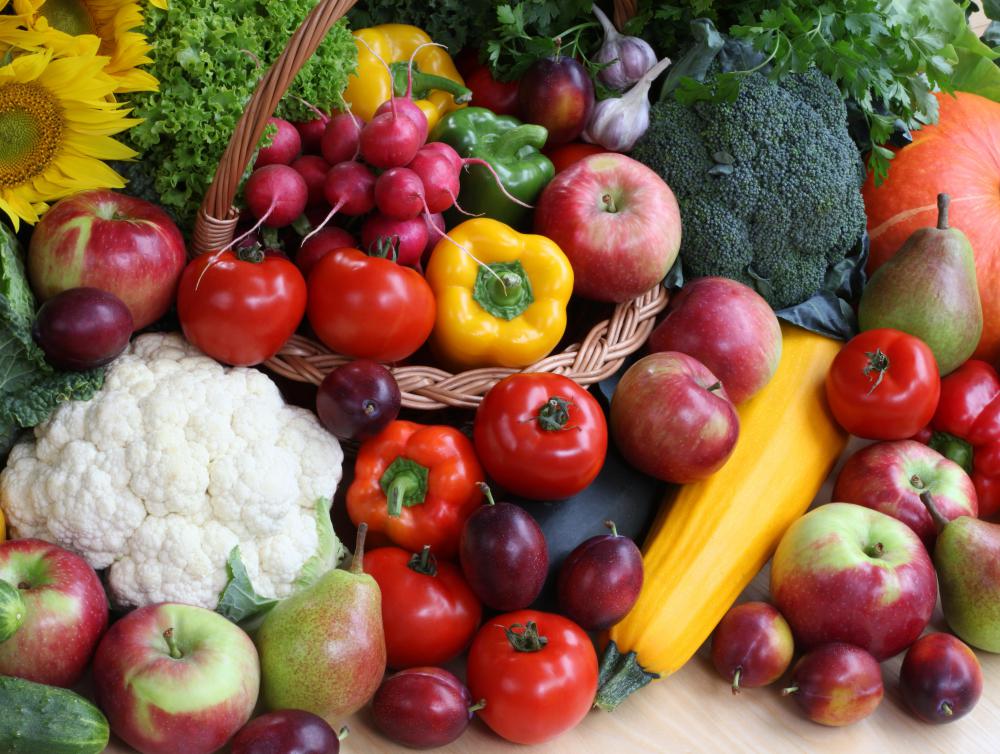At WiseGEEK, we're committed to delivering accurate, trustworthy information. Our expert-authored content is rigorously fact-checked and sourced from credible authorities. Discover how we uphold the highest standards in providing you with reliable knowledge.
What are High Protein Fruits?
Though vegetarianism has grown to be a popular practice, many people worry that the diet is greatly lacking in protein. With the presence of beans, soy, vegetables, and high protein fruits, however, such a lifestyle can be healthy. Many people are unaware that high protein fruits, such as avocados, pears, and peaches, can serve as healthy protein diet food.
Healthy fruits make a popular protein alternative because they are low in fat, low in calories, and contain many other nutrients key to body growth, development, and maintenance. Apricots, which are fruits high in protein, are one example. Not only are they rich in protein, but they are also high in calcium, zinc, folic acid, potassium, iron, fiber, beta carotene, and vitamin K.

Avocados are also high protein fruits. Though often mislabeled as vegetables, avocados are actually fruits that are high in protein as well as zinc, niacin, fiber, folic acid, and other essential nutrients. They are also a good source of heart-healthy fats. Unlike most other fruits, however, avocados are high in calories.
High protein fruits also include figs. Like avocados, dried figs have a high caloric content, as well as a high carbohydrate content. In addition to being a good source of protein, figs also contain fiber, calcium, potassium, and many other nutrients. Because of the fig's nutritional makeup, it is often recommended as a healthy snack for athletes.
Peaches are high protein fruits. An average peach contains .07 ounces (two grams) of protein. The fruit is also a good source of fiber, vitamin C, and vitamin A. Pineapple is another good source of protein.

Other fruits that contain protein include goji berries or wolfberries, raspberries, apples, coconuts, blackberries, prunes, pears, watermelon, honeydew, lemons, cantaloupe, bananas, and cherries. Dried goji berries contain the highest protein amount, with .14 ounces (four grams) of protein per serving. The rest contain .04 to .11 ounces (one to three grams) of protein per serving.

Fruits do not contain as many proteins as animal food sources overall. People who consume a diet made up of a variety of fruits, however, will likely eat a sufficient amount of protein. Combining fruits with other protein sources, such as beans, legumes, soy, and other foods can also add up to the same amount of protein or more, when compared to a meat-inclusive diet.

Many high protein vegetables are also available as meat substitutes. Asparagus, corn, artichokes, broccoli, and many other vegetables contain protein. Almonds, walnuts, and many other nut varieties can provide large servings of protein as well. Some vegetables, such as split peas and lentils, do have as much as one ounce (28 grams) of protein, which is similar to a serving of meat.
AS FEATURED ON:
AS FEATURED ON:






















Discussion Comments
Really, all fruits and vegetables contain some protein, and most people get too much- you really should only have about one gram of protein per day for every two pounds or one kilogram of your weight. For a woman who weighs 130 pounds, that is only 65 grams; even for a man who weight 150 pounds, it is only 75 grams. And honestly, for many of us, our lack of protein is not the biggest problem in our diets.
Avocado tends to be overlooked a lot of the time, whether people refer to it as a fruit or a vegetable. Yes, it is great as a guacamole, but it can be used so many other ways- in soups, in sauces, or even sliced up or mushed together raw to put on sandwiches or in salads. And because it contains one of the "good" fats as well, it really is a winning food.
Apricots and figs can be delicious not only fresh, but also dried. The fact that these two high protein, fiber filled fruits are available many places all year long in dried form makes them especially useful for vegetarians trying to get more protein.
Post your comments